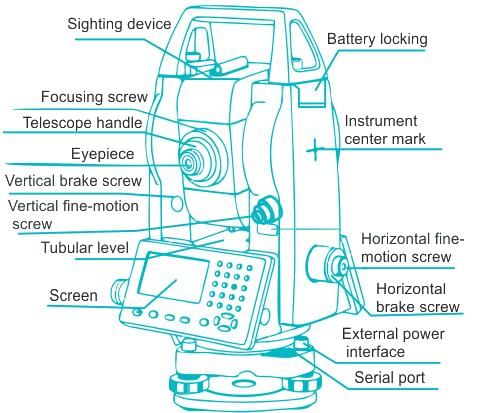Civil Engineering (CE) Exam > Civil Engineering (CE) Tests > Test: Total station - Civil Engineering (CE) MCQ
Test: Total station - Civil Engineering (CE) MCQ
Test Description
10 Questions MCQ Test - Test: Total station
Test: Total station for Civil Engineering (CE) 2025 is part of Civil Engineering (CE) preparation. The Test: Total station questions and answers have been prepared
according to the Civil Engineering (CE) exam syllabus.The Test: Total station MCQs are made for Civil Engineering (CE) 2025 Exam.
Find important definitions, questions, notes, meanings, examples, exercises, MCQs and online tests for Test: Total station below.
Solutions of Test: Total station questions in English are available as part of our course for Civil Engineering (CE) & Test: Total station solutions in
Hindi for Civil Engineering (CE) course.
Download more important topics, notes, lectures and mock test series for Civil Engineering (CE) Exam by signing up for free. Attempt Test: Total station | 10 questions in 30 minutes | Mock test for Civil Engineering (CE) preparation | Free important questions MCQ to study for Civil Engineering (CE) Exam | Download free PDF with solutions
Test: Total station - Question 1
How many types of EDM instruments are there based on wavelength?
Detailed Solution for Test: Total station - Question 1
Detailed Solution for Test: Total station - Question 2
Test: Total station - Question 3
Which unit in total station is used for the computation of data collected?
Detailed Solution for Test: Total station - Question 3
Test: Total station - Question 4
In a total station survey work, the leveling of the total station and exact centering at a station are respectively done by using:
Detailed Solution for Test: Total station - Question 4
Test: Total station - Question 5
Total Station can directly be used to calculate:
- Horizontal angles
- Vertical angles
- pH of the water
- Sloping distances
- Level of PM2.5 in air
Which of the above statements are correct?
Detailed Solution for Test: Total station - Question 5
Test: Total station - Question 6
To set the Total Station at a point, temporary adjustments have to be made. The temporary adjustments to be made periodically are:
Detailed Solution for Test: Total station - Question 6
Detailed Solution for Test: Total station - Question 7
Detailed Solution for Test: Total station - Question 8
Detailed Solution for Test: Total station - Question 9
Detailed Solution for Test: Total station - Question 10
Information about Test: Total station Page
In this test you can find the Exam questions for Test: Total station solved & explained in the simplest way possible.
Besides giving Questions and answers for Test: Total station, EduRev gives you an ample number of Online tests for practice
Download as PDF















